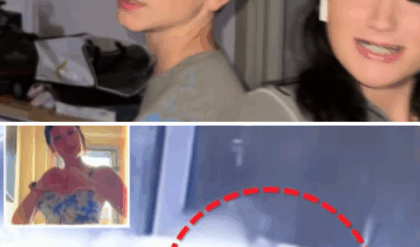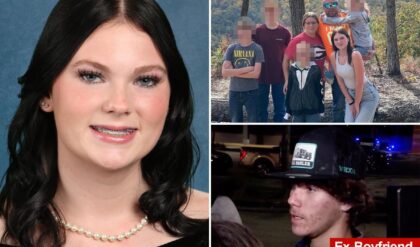Costume designer Alex Bovaird creates a tactile, frozen world in True Detective: Night Country. In the fourth season of the HBO series, filmmaker Issa Lopez takes Bovaird and audiences to the fictional town of Ennis, Alaska. As the True Detective formula goes, two badge-wearers, Chief Danvers (Jodie Foster) and Evangeline Navarro (Kali Reis), try to crack a mystery. A past case once brought the two together, and a new case – eight men gone missing and found frozen to death in ice – reunites them.
Making the mystery more challenging, not to mention more atmospheric and cinematic, is the harsh climate. “Issa wanted to create a real world,” Bovaid told The Credits. “A world that we don’t often see.”
Bovaird, the critically acclaimed costume designer behind American Honey, Nope, and The White Lotus, recently spoke to The Credits about her journey towards a chilly authenticity with True Detective: Night Country.
What did crunch time look like on True Detective: Night Country?
Well, when you do these shoots abroad, they have all these logistical problems that are really boring to talk about, but it’s funny because people texting me are like, “Was it easy? A breath of fresh air to do a uniform show?” Everyone thinks the uniforms are easy. We shot it in Iceland, and you can’t walk down the street and pick up an Alaska State trooper uniform. You just couldn’t get products that you needed, and then you had to replicate the Alaska State Troopers very authentically, but you couldn’t get it from the Alaska State Troopers.
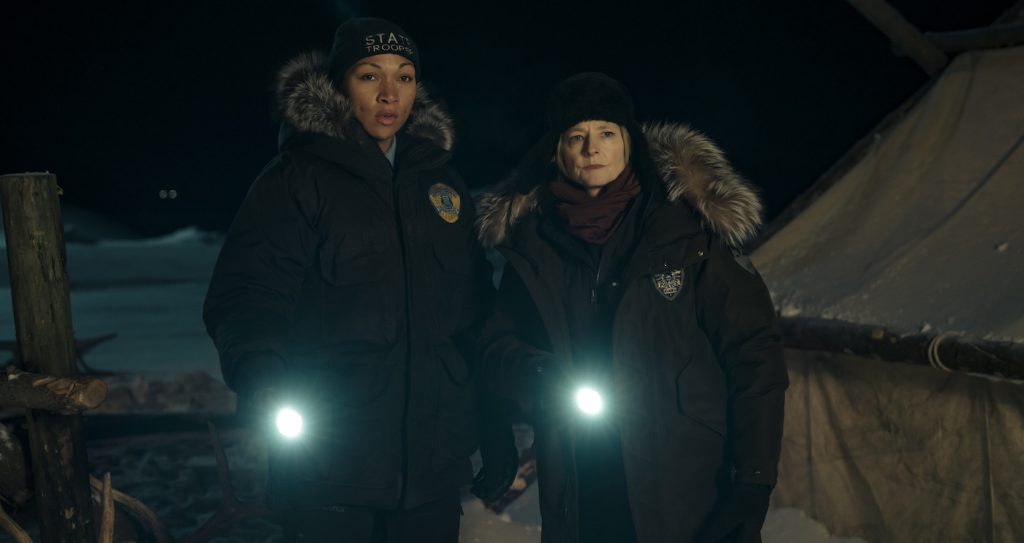
Kali Reis, Jodie Foster. Photograph by Michele K. Short/HBO
What about the Ennis police uniform Chief Danvers wears? Same deal?
There’s only so much you can do with a police uniform. It’s either blue or gray or navy or brown. We wanted to make it distinct from other shows, but also, there are only so many things you can do. So we chose the colors, and we got custom things made for Jodie because of her size. The police uniforms are never that flattering, but we made things custom for her body. We got a guy in New York to make a special shirt with the right size pockets so it looked like it fit her well. There were just lots of logistical problems. At crunch time, where are we going to get the right color fabric to make the rest of our uniform? It was all very down to the wire, but we got the real person who makes the Alaska State Troopers vests in Colorado to make some.
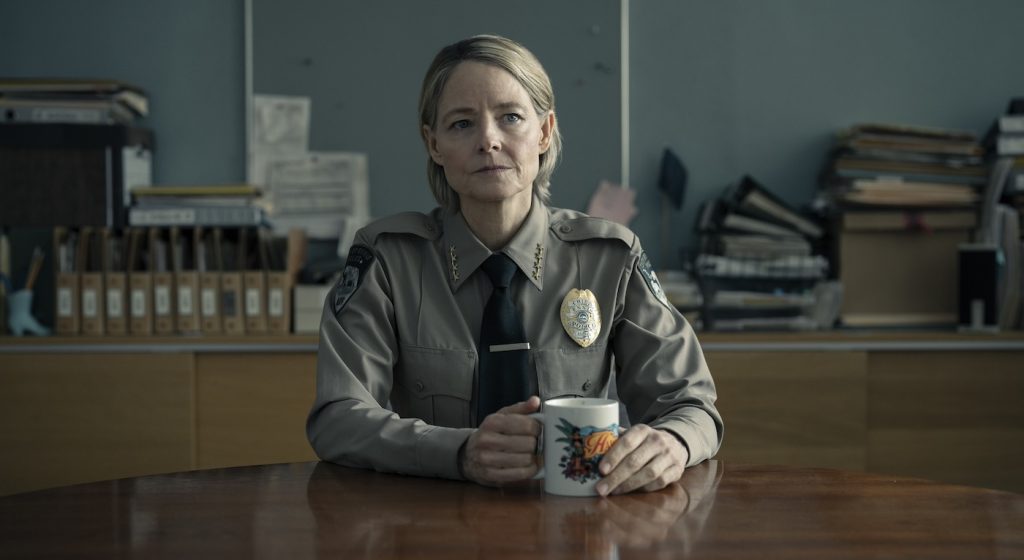
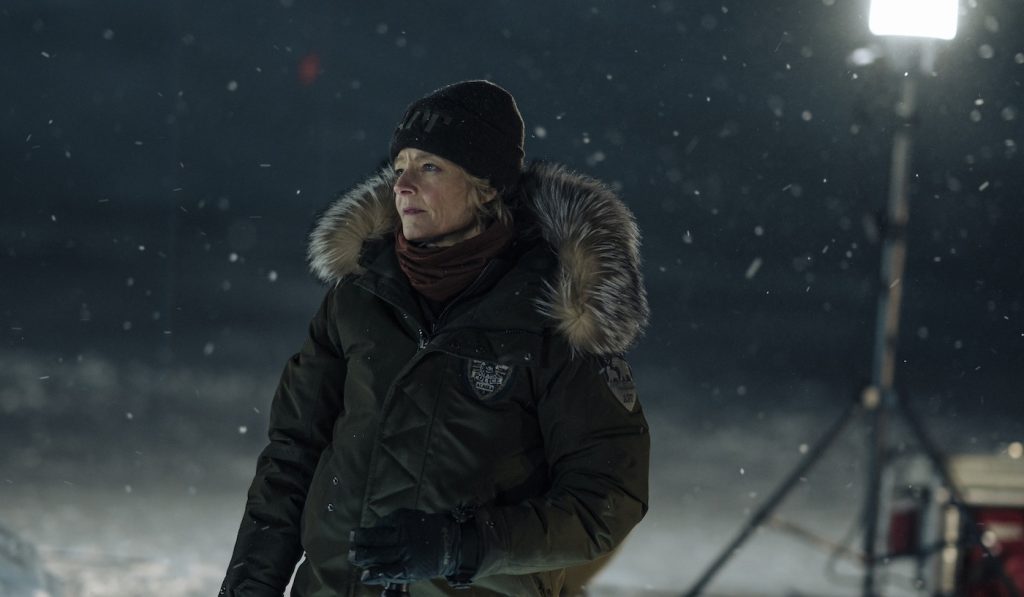
Jodie Foster. Photograph by Michele K. Short / HBO
Did you go to Alaska and do research there?
My team and I did almost a month of shopping and researching. We met some troopers. I met someone at a fabric shop, actually, whose husband was a trooper, and so she was a wealth of information. I kept texting her to look inside various garments that he had and tell me the fabric content. We watched a lot of Alaska State Troopers as well, which is a show like Cops. Pretty amazing show. With the snow, cops have to stay nimble, but they also have to stay warm. So, a lot of them go out on snowmobiles, and they’re in ski pants and parkas, and they’ve got icicles hanging out of their noses. It’s actually more extreme than it looks in our show.
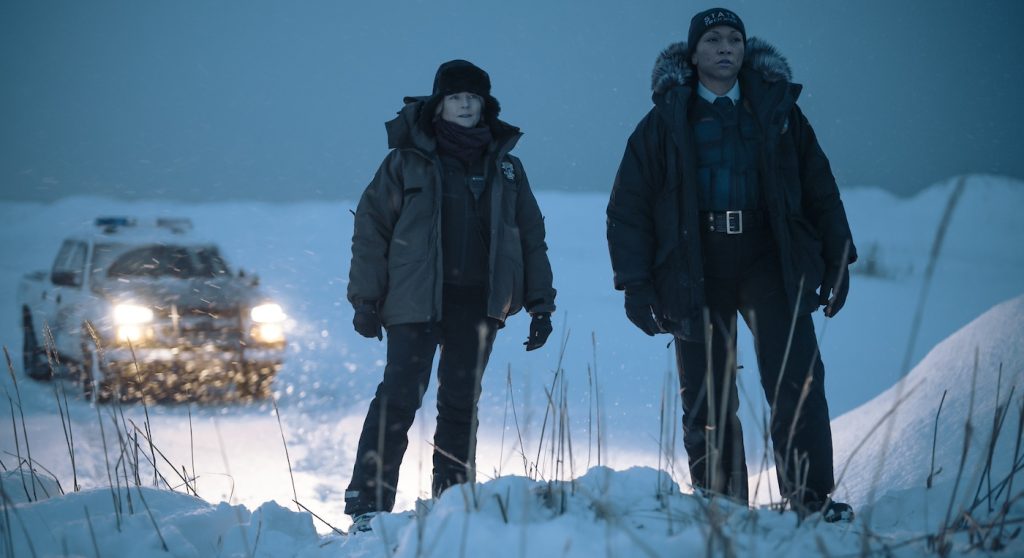
Jodie Foster, Kali Reis
Photograph by Michele K. Short/HBO
How’d you want to help define Jodie Foster’s character when she’s out of uniform?
Jodie had met a bunch of cops, and she felt the women often wanted to play up their femininity a bit more when they were off-duty, which is maybe contrary to what people think. Maybe the women are more tomboys or maybe they’re sporty, but she definitely wanted to have some items in her civilian looks that were soft, red, pink, and a bit more girly. She has what you call long johns, with little flowers on them. So, she has some pretty and dainty things to contrast with her tough police uniform.
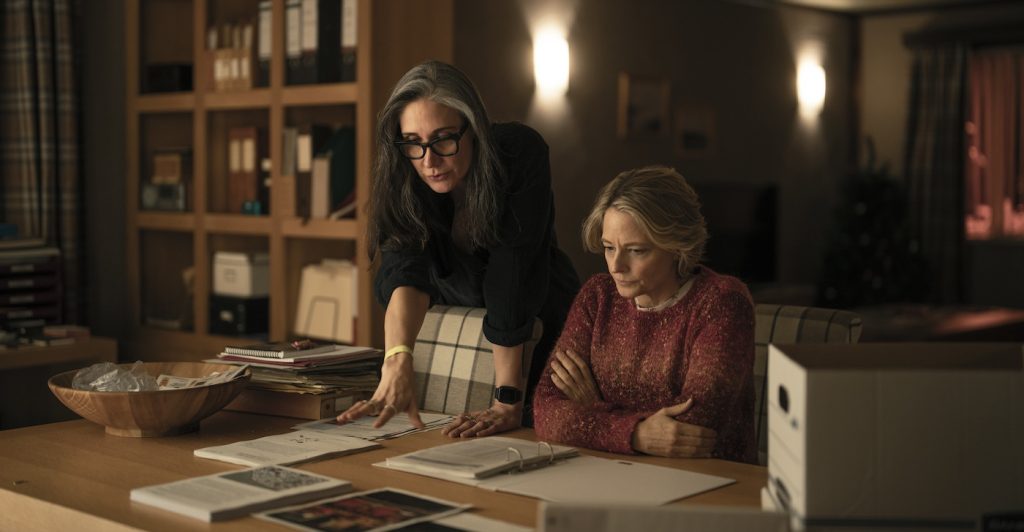
Issa Lopez and Jodie Foster. Photograph by Michele K. Short.
What about Kaylee? What character traits did you both want the costumes to emphasize for Evangeline Navarro?
With Kaylee, we wanted to weave in her story that she used to be in the military and she works out and she’s tough, so she definitely has more sporty costumes. She wears an Army green sweater a lot of the time, and she wears a Carhartt. Once you go to Alaska, you see everybody wearing Carhartt. Everybody wears the same kind of rubber boots, too.
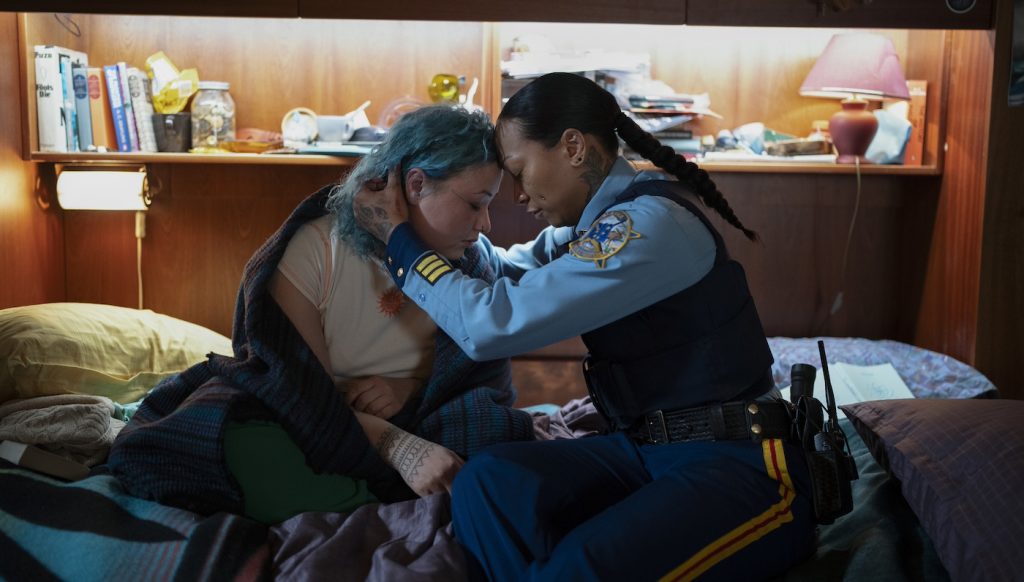
Aka Niviâna, Kali Reis. Photograph by Michele K. Short/HBO
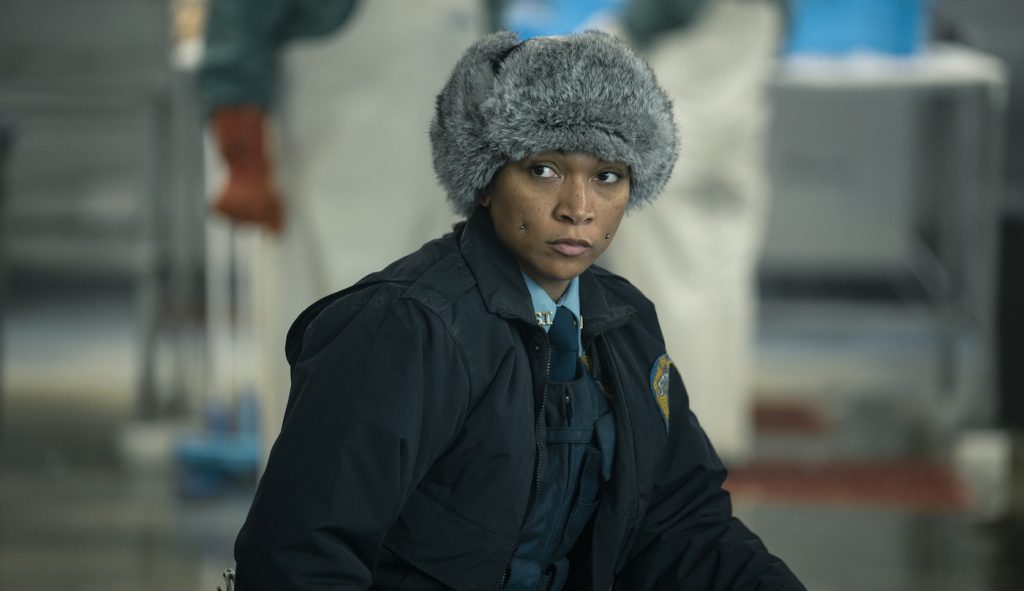
Kali Reis. Photograph by Michele K. Short/HBO
How’d the weather challenge you?
The cold was truly awful at times and really challenging, and so was the darkness. I thought the writing was so good in Issa’s scripts, but I did hesitate when every other scene was exterior. I worked with my husband, but he’s a little bit more out in the world gathering things, and he was like, “We got to do the show.” And I was like, “Yeah, but you are not the one standing outside at night.” The first couple of nights we did, it was like minus 20 Celsius. I hadn’t gotten the right boots yet, and my toes were attacking me.
With the cold and the dark, what kind of costume tests did you, Issa, and the cinematographer, Florian [Hoffmeister], do?
I tried to figure out with Florian what shooting in darkness and at night meant. We did lots of tests with different costumes and fabrics with this blueish filter. In the last three episodes, Jodie wears a white parka. It was a controversial choice because white in film, you don’t see it a lot. A lot of DPs don’t like it, but I just thought it would be iconic to have something that totally stands out in the darkness. Florian was really up for it. I think he was really happy with it in the end because you can pick her out.
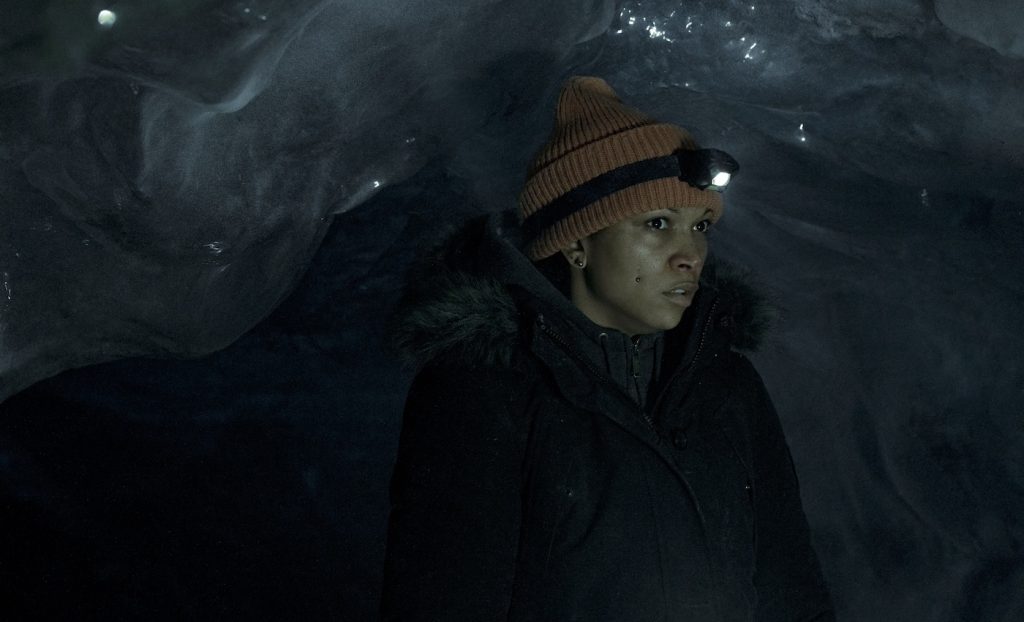
Kali Reis. Photograph by Michele K. Short/HBO
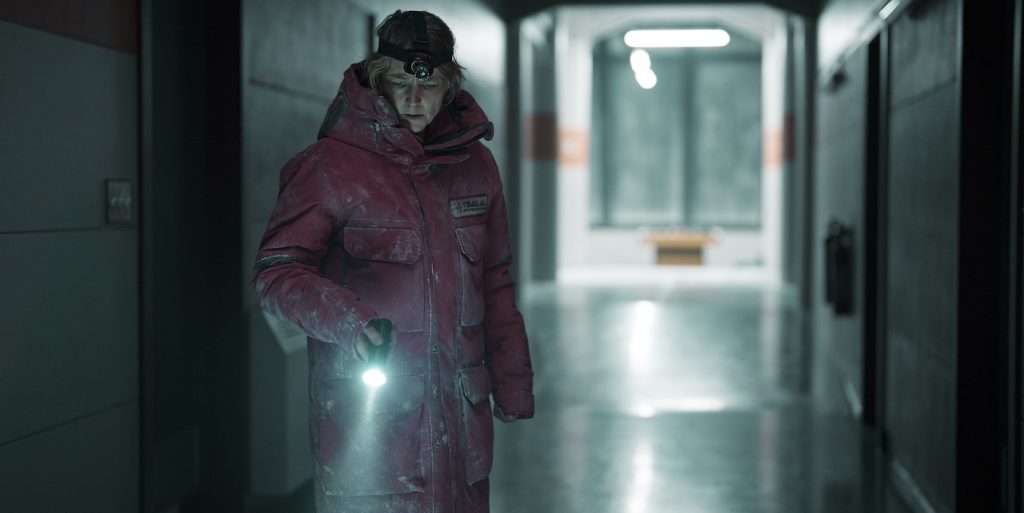
Jodie Foster. Photograph by Michele K. Short/HBO
A lot of these characters dress to survive. During your time in Alaska, however, did you find any exceptionally stylish dressers?
Not the non-native Alaskans, but the indigenous community is pretty lively and colorful and keeps hold of their traditions. Lots of fur, bone earrings, and walrus tusk necklaces, and that stuff was pretty cool. We went to some wild places that sold all the different animal pelts. Learned a lot about things like wolverines. It’s the animal that has the best fur for not creating a frost, and so it’s better for visibility. And then there’s the muskox. It looks like a buffalo. It also has the warmest yarn known to man or something, and they make muskox scarves. That’s the warmest thing you can have on your neck.
How else did you want your choices to respect the indigenous culture in Alaska?
They’re very proud. A lot of the reason that they choose to exist out in these communities and stay together is that they’re holding onto their heritage. There’s a lot of pride in that. They gather salmon berries every season, every spring, so a lot of their clothes have salmon berries on them. Their use of animals to keep warm is important to them, and I think it’s important to the indigenous community that we made their clothes in the right way. Alaskan producers advised us to use the correct materials, so we got them from Alaska.
